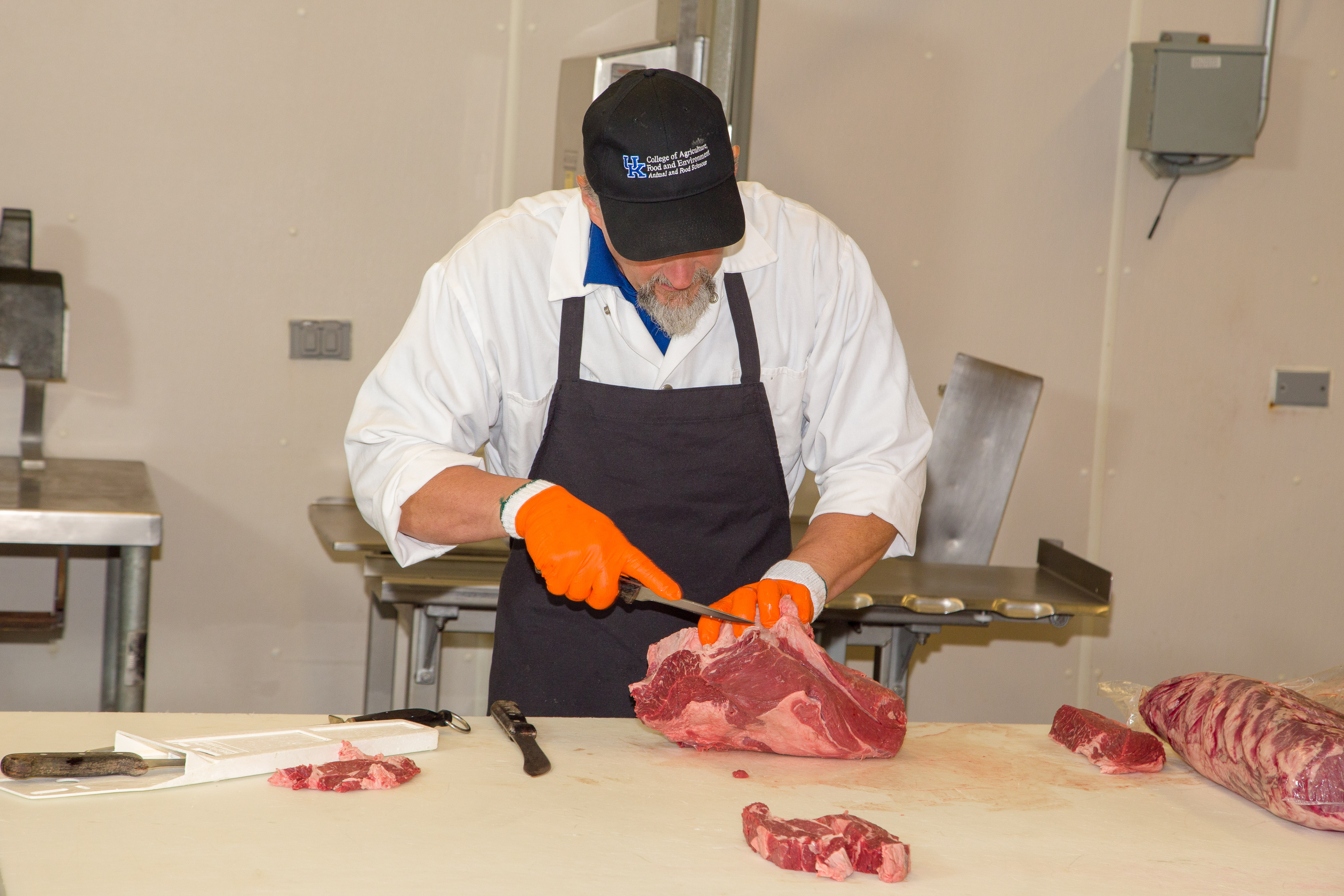COVID-19 pandemic revealed meat industry vulnerability; future looks better
COVID-19 pandemic revealed meat industry vulnerability; future looks better


During the early months of the COVID-19 pandemic, meat cases across the United States looked empty as nervous Americans stockpiled supplies for an unknown future. Most of the supply shortages were due to panic buying, but it revealed some design flaws in the system.
“There was so much uncertainty with what was going on and not just with the meat industry, but with the food industry in general,” said Gregg Rentfrow, meat specialist for the University of Kentucky College of Agriculture, Food and Environment. “What ended up happening revealed that we are victims of our own design. We created this system where we view animals sort of like racecars—get to market weight as fast as you can through various management practices and genetic selection. Then we had a packing system that was designed to deal with these quick-growing animals.”
Rentfrow said large plants typically process 1,300 head of pigs, 500 head of cattle, 12,000 chickens per hour, 16 hours a day, five-to-six days per week.
“All of a sudden COVID-19 strikes a plant, and they have to shutter that plant,” he said. “All these plants were shutting down, but we still had all these animals growing. We had producers calling to ask how we could slow down the growth of animals. The supply chain just stopped, and producers had no way of getting animals to market. There wasn’t a shortage per se, but a clog in the entire system.”
Producers started looking to local processor, and those smaller shops began to have waiting lists and bookings into October 2021. The local markets were saturated.
“Consumers discovered some of these local markets for the first time during the pandemic,” Rentfrow said. “That was a good side effect. You always try to find a silver lining.”
Rentfrow said the pandemic exposed the meat industry’s vulnerability.
“We have yet to return to the processing speeds that existed before COVID-19,” he said. “We’re close but having to space out workers in the assembly lines and put dividers between people naturally slows the process down a bit. They have acclimated to that well, but speeds are slower.”
Even though processors have somewhat caught up with supply demands, consumers likely will not see a price drop in the stores. The price may look the same, but with a closer look, the volume of the product may be reduced. For example, a grocer may charge the same for a 12-ounce package of bacon that they charged for a 16-ounce package before the pandemic.
Rentfrow said the industry has learned a lot from the pandemic.
“I think before, sick people would go to work as long as they could still walk and function, especially in our industry,” he said. “People are just not going to do that anymore, so we’ve learned to prioritize health and well-being a little bit more. That is good for an industry that has people so close together all day long.”
Agricultural Economics

